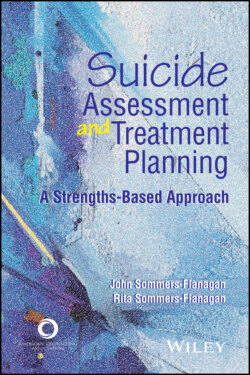Читать книгу Suicide Assessment and Treatment Planning - John Sommers-Flanagan - Страница 48
Competency 6: Develop and Enact a Collaborative Evidence-Based Treatment Plan
ОглавлениеSuicide treatment planning should be strengths based and collaborative whenever possible. However, sometimes clients are unable to collaborate. They may be agitated, impulsive, lethargic, unengaged, and/or only minimally responsive. On other occasions, clients will flat out resist your collaboration efforts. When clients are unable to contribute to safety or treatment planning, risk is likely higher, and you will need to take the lead in safety planning.
When clients report suicidal ideation, short-term safety planning is recommended. Two short-term safety planning protocols have evidentiary support. These are Stanley and Brown’s (2012) safety planning intervention and Bryan and Rudd’s (2018) crisis response plan.
Longer term treatment planning is an important part of this competency. As Linehan (1993; Linehan et al., 2012) has discussed, sometimes clinicians need to be bold and direct. She typically speaks frankly, saying things like “We may have to go through hell together.” Her purpose is to show her commitment to the treatment process and to give clients messages of hope (e.g., “I know this therapy I’m offering you can help”). Consistent with general counseling and psychotherapy guidelines, engaging clients in an ongoing treatment plan requires you to present a clear rationale that connects counseling tasks to collaboratively generated counseling goals (J. Sommers-Flanagan, 2015b).
To have competency within this domain, you will need to do the following:
1 Invite clients to collaborate with you on short-term safety planning or longer term treatment planning.
2 Be able to implement specific steps linked to either the safety planning intervention (Stanley & Brown, 2012) or the crisis response plan (Bryan & Rudd, 2018).
3 Become directive, take the lead, and possibly initiate intensive treatment (e.g., a residential facility or psychiatric hospital) when clients are not willing or able to engage in safety planning.
4 Speak to clients about your hope for positive outcomes, your desire for them to commit to ongoing treatment, and the rationale for counseling tasks and goals.
5 Scan for and reflect strengths in your clients’ presentation. This will require knowledge of protective factors and reframing skills (Cureton & Fink, 2019).
